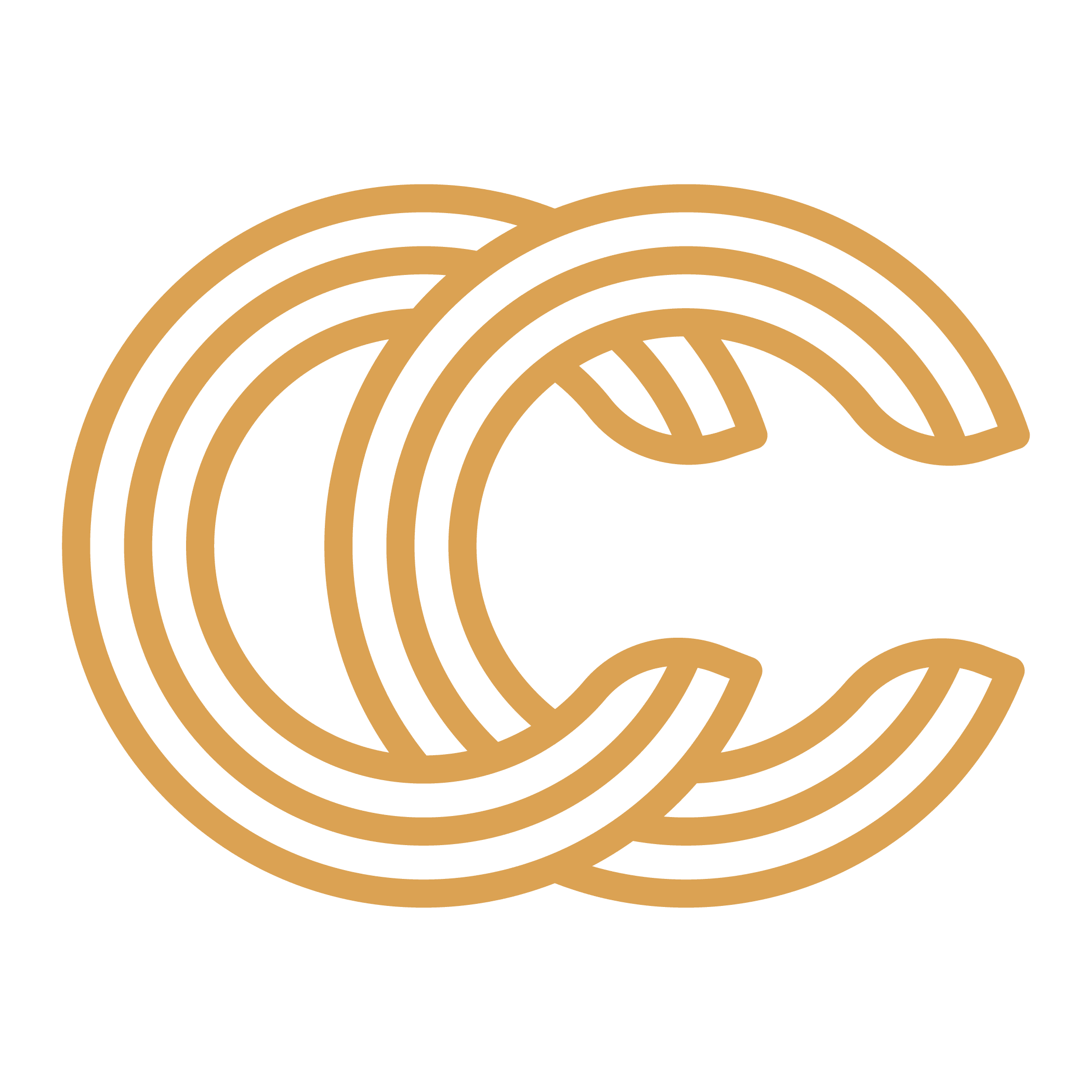
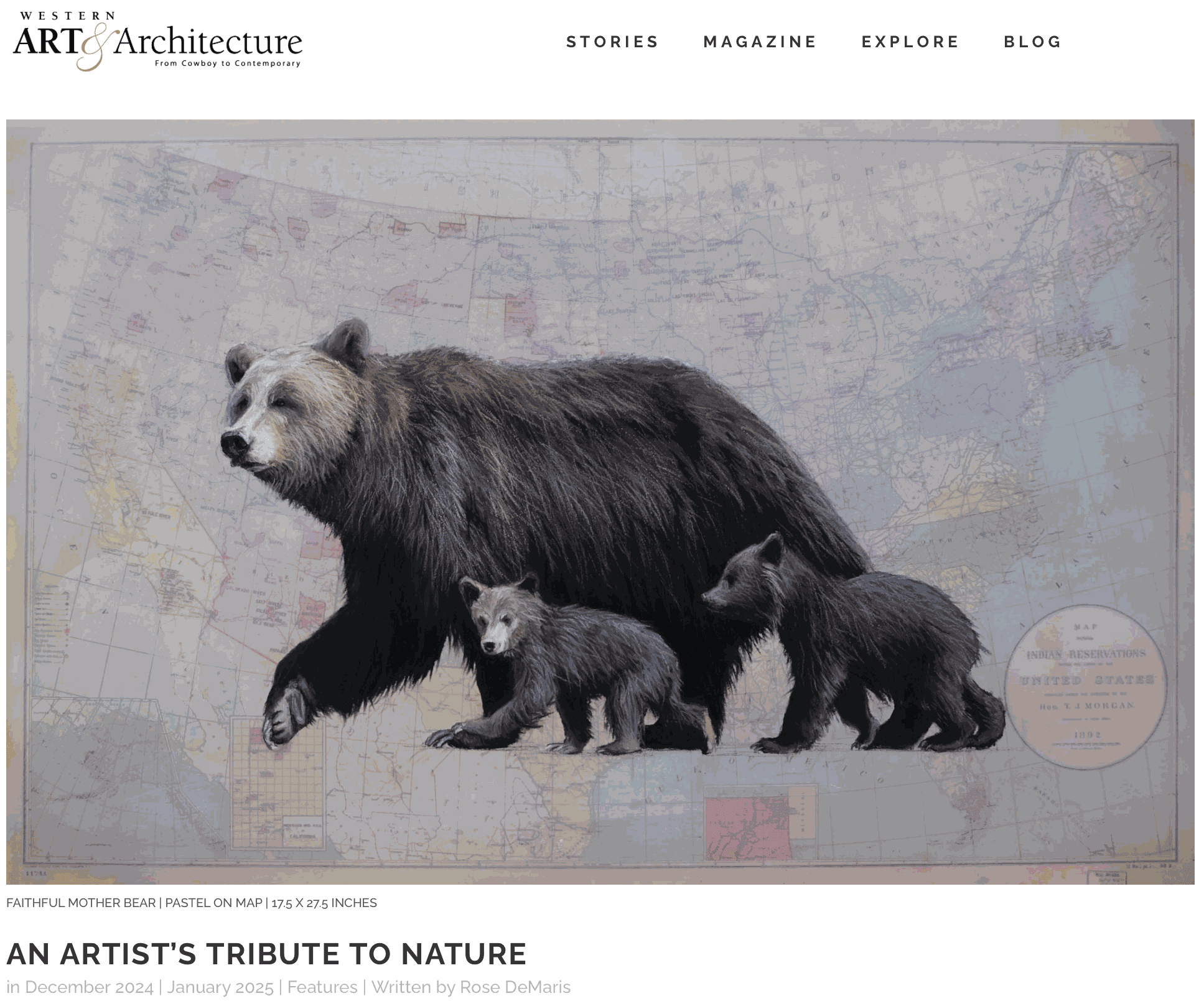
October 31, 2024
A sweet, fantastical origin story is attached to acclaimed pastel artist Lisa Gleim's lifelong love for animals. "My father always told me that I was 'born into a litter of puppies because when I was born, our golden retriever had just given birth to 12." Fatherly fairy tales aside, Gleim, a Georgia native who now splits her time between Atlanta and Big Sky, Montana, "grew up with all sorts of animals - a skunk, lizards, bunnies, a chicken, ferrets, and - of course - dogs. I am drawn to animals for their unique personalities and their connection to the earth."

Gleim carried her childhood amnity for animals into art school. As a student at the Pennsylvania Academy of the Fine Arts, her favorite class was animal drawing, during which she painted ana drew live animals in the studio; the diverse menagerie of models included rabbits, draught horses and alligators. This opportunity to study and render living animals at the highly traditional academy - the oldest fine art school in the country - shaped Gleim's style, which synthesizes technical mastery with palpable feeling. From elk, bear, wolf, and lamb to fox, badger, bison, and egret, her animal subjects' gestures and eyes are wondrously expressive. Looking at the bobcat featured in The Hunts Good Luck Charm, a viewer keenly feels that the feline is looking - with both intelligence and benevolence - right back.
"Their eyes are the most important thing," Gleim says. "My goal in creating works around wildlife is to show their essence and spirit. The best way to do that is through the expression with their eyes. They say eyes are the window to the soul, and I do believe that also goes for the animal world."
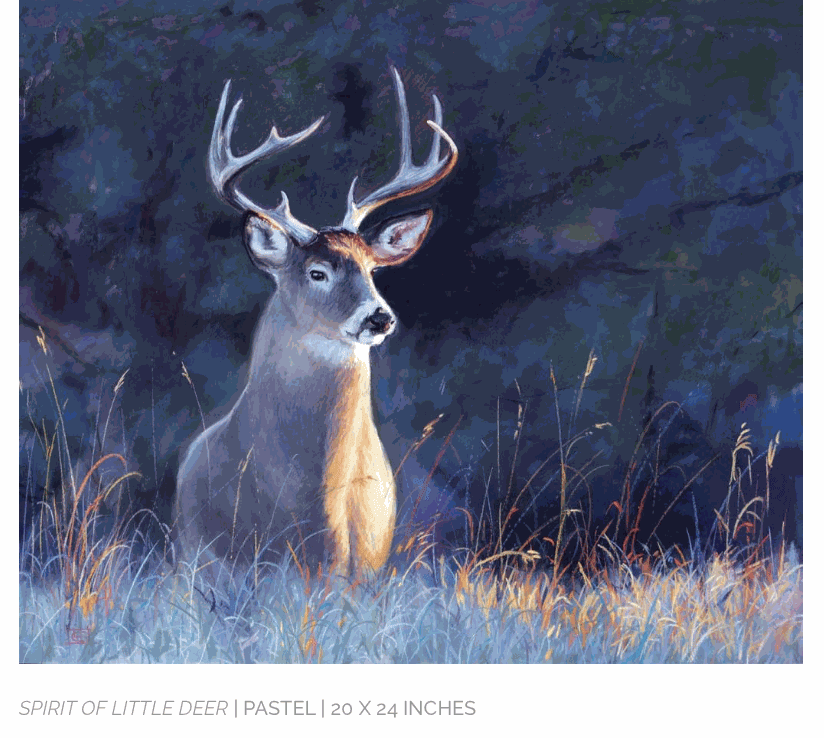
Color and light also contribute to the emotional resonance of Gleim's work - qualities she expertly harnesses through her use of pastels."I began using the medium about 30 years ago," she says, "and fell in love with the ability to draw my paintings." Though she had mostly worked in oils as an art student, one class in particular was about other mediums, Including pastel. The possibilities of pastel fostered even deeper creativity in the artist and empowered her to achieve the enchanting chromatic radiance of her award-winning, widely shown and collected works. "The never-ending values and colors you can get with pastel are unlimited. The other thing that I love about the medium is the vibrance you get. Since pastels are pure pigment, meaning they are made without a binder such as oil, acrylic, gel, etcetera. I'm able to get a pure saturation of color. The light also penetrates the pigment much better, so the vividness of the work stands out."
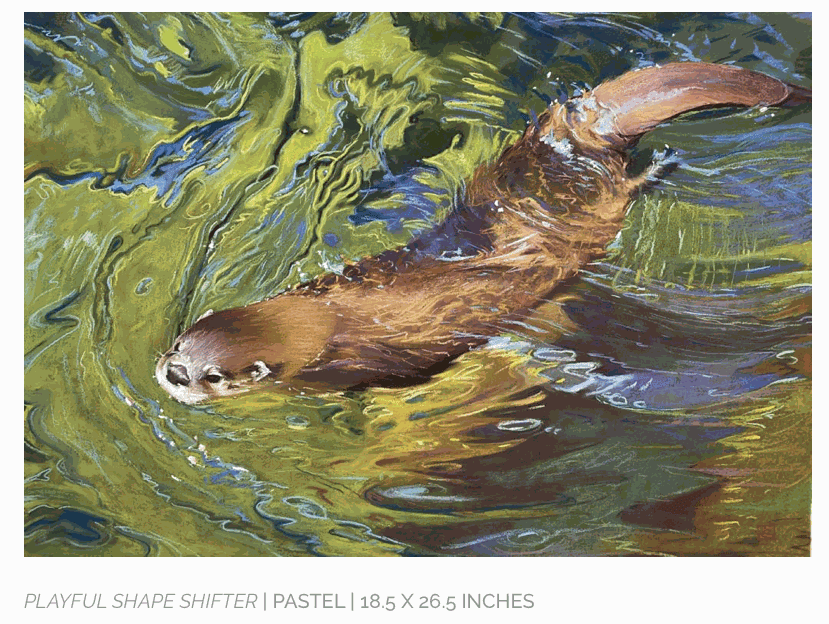
Gleims artwork titled Playful Shape Shifter is one or countless others that exemplify such vividness: an otter swims in kaleidoscopic water that swirls with blue, green, gold, violet, and chocolate hues; the water is as alive as the animal within it. It is not only animals Gleim imbues with intense vitallty but countless features of the natural world along with Earth's human inhabitants, as she also paints landscapes, still lifes, and portraits. Still, the four-legged, feathered, furred, and scaly subjects of her wildlife pastels hold a privileged place in her heart.
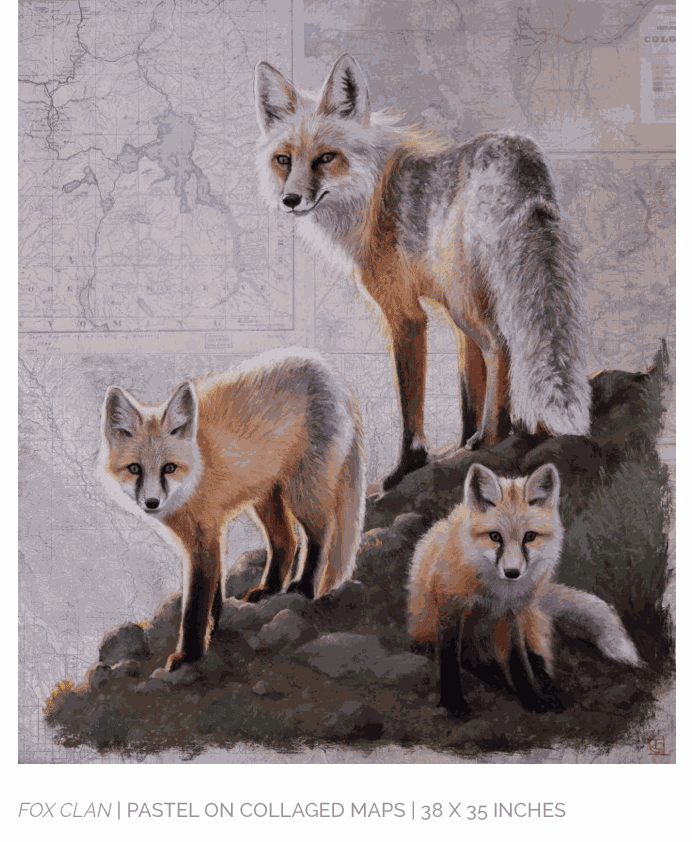
"I would like for my viewers to feel connected to the animal kingdom... to understand that all living creatures have a place in this world, and their existence depends on each and every one of us. I am a member of Artists for Conservation and feel passionate about using my work to educate people on the fragility of our animal kingdom and how crucial it is that we ensure these animals do not become endangered or go extinct."
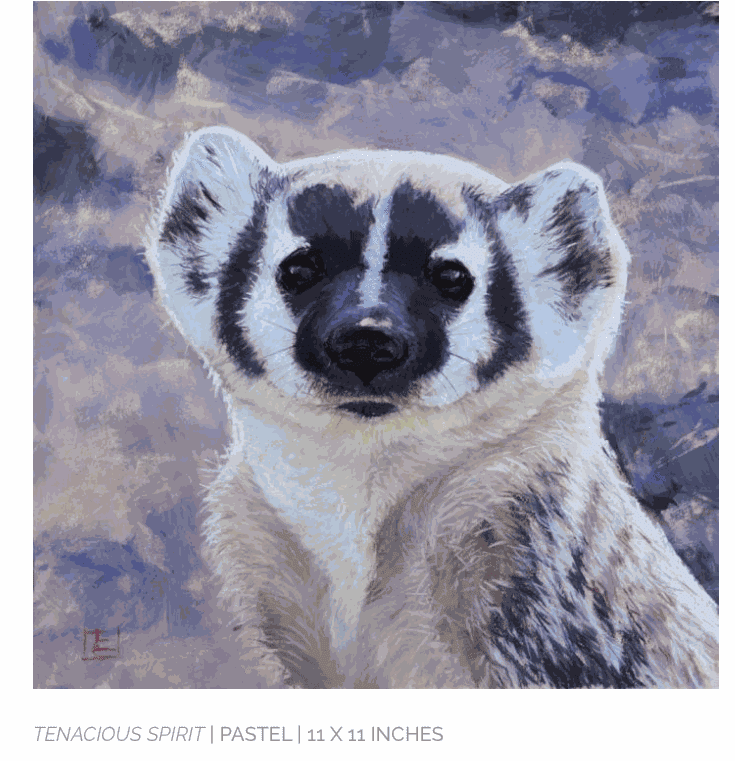
Habitat is a key element of conservation, and Gleim is interested in the relationship between wildlife and place, using maps and other ephemera in the background of her drawings, many or which relate to the locales where the animals live. "I often use national park maps as most of these animals are protected within their limits. I want the [work's] surface to reflect something about the animal or the story I am trying to convey to the viewer. I've used historical territory maps, old ads from order catalogs, fishing licenses, and patent drawings as well as geographic and mineral surveys."

In Faithful Mother Bear, a circa-1890 map of U.S. Indian reservations serves as a background for a black bear and her two cubs, It's one of 22 works on display in Gleim's current solo exhibition at the Customs House Museum and Cultural Center in Clarksville, Tennessee, The Keepers of the Animals: A Perspective. In this show, which opened on October 23, 2024 and is ongoing through January 1, 2025, Gleim aims to convey "how wildlife represents various and similar themes in different First Nations," she says. "Each piece will be accompanied by a short write-up about the story or legend of the animal and their meaning to a particular tribe." The works Gleim has included in this exhibition connect to a multitude of tribal nations, including the Cherokee, Navajo, Lakota, Cheyenne, Sioux, Sauk, Algonquin, Creek, Seminole, Apache, Zuni, Ojibwa, Huron, Iroquois, Osage, Hopi, Navajo, Pueblo, Tlingit, Mi'kmaq, Chippewa, and Chickasaw.
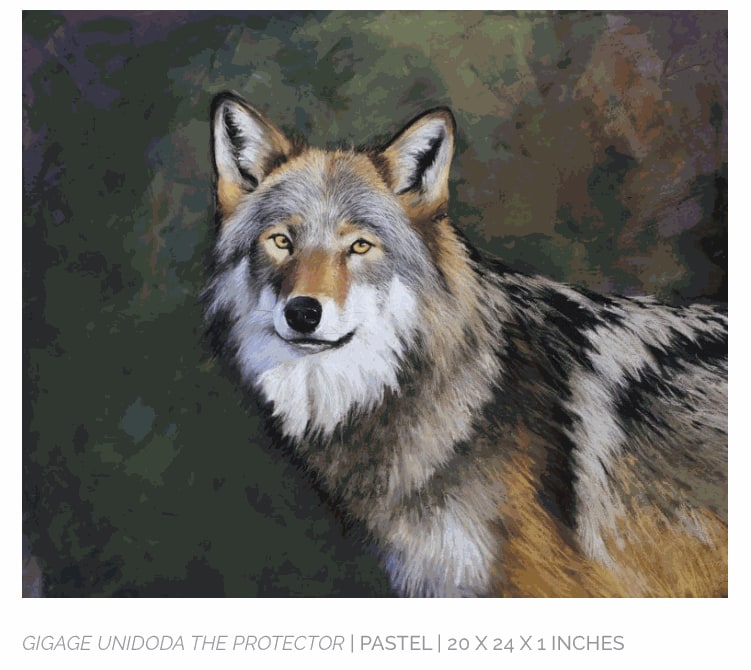
"I have cousins — who are more like nieces to me — who are members of the Chickasaw Nation." Gleim says. "I have always been drawn to and deeply saddened by the history of the treatment of Native peoples over the years: the destruction of their homes and ways of life, their removal from their ancestral territories, and the suppression and loss of their spiritual beliefs due to colonization and Westward expansion. Their connection with the earth and the animals is deeply moving to me, and I have enjoyed reading about how each tribe reveres animals in similar and different ways." Gleim was moved by the commonalities she found among the various tribes' beliefs and stories about animals, as well as the ways in which they were unique. "I have several bear paintings in the exhibition, but each one is represented by the legend from a different tribe."
"This exhibition is perfect for our audience, says Terri Jordan, curator of exhibits at the Customs House Museum and Cultural Center, "as it incorporates not only wonderful art but accompanying text that shares insight into the spirit meanings of the animals represented. We feel this is a great component to pique the interest or our school-age quests especially into learning more about Native American cultures and symbolism.
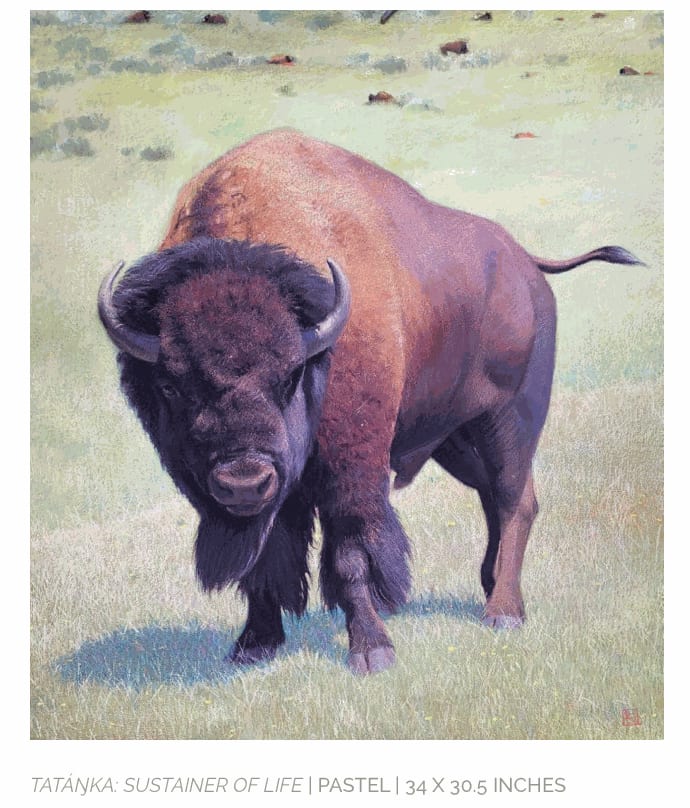
The communicative and engaging quality of Gleim's pastels powerfully underscores the words that accompany them. "Lisa has a wonderful ability," Jordan adds, to capture the character of her subject through pastels that give the viewer a sense of familarity when looking at her work.
Planning for the future, Gleim is eager to connect viewers with an even wider array of wildlife via her pastel drawings. "I have been to Africa twice." she says, "and will be returning again in 2026. I believe traveling to Africa has made my passion for animals even stronger, and I look forward to creating more work from this incredible part of the world. Especially," she adds with the same enthusiasm and affection for animals she has felt since her childhood, "large cats!"
